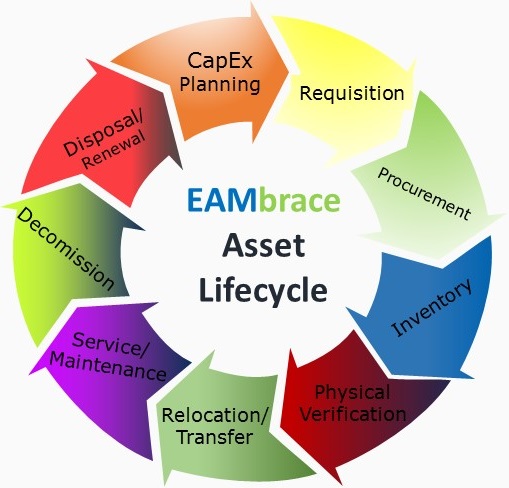Introduction
Requirements Life Cycle Management (RLCM) is a fundamental aspect of business analysis that ensures project success by maintaining control over requirements from inception to retirement. Properly managing requirements throughout their life cycle reduces risks, prevents scope creep, and ensures alignment with business objectives.
For professionals aiming to develop expertise in this domain, enrolling in a business analysis course in Bangalore provides structured exposure to the essential tasks, tools, and techniques required for effective requirements life cycle management.
Understanding Requirements Life Cycle Management
Requirements Life Cycle Management involves tracking, reviewing, and maintaining requirements from the moment they are identified until they are no longer relevant. It ensures that requirements remain aligned with project goals, business needs, and stakeholder expectations.
Key components of RLCM include:
- Traceability: Linking requirements to business objectives, design, implementation, and testing.
- Version Control: Managing changes in requirements to ensure consistency and clarity.
- Status Monitoring: Keeping track of requirement progress, approvals, and implementation.
This discipline allows business analysts to create a structured approach for handling requirements systematically, preventing misunderstandings, and supporting project governance.
The Core Tasks in Requirements Life Cycle Management
1. Requirement Traceability
Traceability ensures that every requirement is connected to a business objective or stakeholder need. Tasks include:
- Establishing traceability matrices to map requirements to project deliverables.
- Verifying that requirements are addressed in design, development, and testing phases.
- Updating traceability links whenever requirements change or evolve.
By maintaining traceability, analysts can demonstrate that all business needs are being met and provide evidence for regulatory or compliance purposes.
2. Requirement Change Management
Requirements are dynamic, and changes are inevitable in any project. Effective change management involves:
- Gauging the impact of proposed changes on project scope, budget, and timelines.
- Documenting changes and obtaining stakeholder approvals.
- Communicating updates clearly to development, testing, and management teams.
This process ensures that changes do not compromise project objectives and helps maintain stakeholder confidence in the project.
3. Requirement Status Monitoring
Monitoring the status of requirements is essential to track progress and ensure accountability. Analysts should:
- Maintain a status log indicating whether requirements are proposed, approved, implemented, or retired.
- Schedule regular reviews to validate requirement progress.
- Resolve any discrepancies or delays proactively.
Consistent status monitoring helps identify potential bottlenecks early, enabling corrective action before issues escalate.
4. Requirement Prioritisation
Not all requirements hold the same value or urgency. Prioritisation ensures that critical requirements receive attention first. Techniques include:
- MoSCoW prioritisation (Must have, Should have, Could have, Won’t have).
- Business value scoring to rank requirements based on impact and feasibility.
- Collaboration with stakeholders to reach consensus on priority levels.
Prioritisation helps teams allocate resources efficiently and ensures that the most valuable features are delivered on time.
Collaboration in Requirements Life Cycle Management
Effective RLCM requires continuous collaboration with stakeholders, project managers, and technical teams. Key collaboration practices include:
- Stakeholder Engagement: Maintaining frequent communication to verify that requirements are correctly understood and implemented.
- Cross-Functional Coordination: Aligning business, development, and testing teams to ensure smooth execution.
- Feedback Loops: Collecting feedback at each stage of the requirement life cycle to identify issues and refine requirements.
Professionals pursuing a business analysis course in Bangalore gain hands-on experience with these collaborative techniques, learning how to foster alignment and accountability across diverse project teams.
Tools and Techniques for RLCM
Modern projects leverage specialised tools to manage requirements efficiently. Common tools include:
- Requirement Management Software: Platforms like Jira, Confluence, and IBM DOORS provide functionalities for traceability, version control, and reporting.
- Collaborative Platforms: Tools that enable real-time stakeholder communication, document sharing, and feedback collection.
- Dashboards and Reporting: Visualisation tools to monitor requirement status, progress, and dependencies.
These tools enhance transparency, facilitate better decision-making, and reduce manual effort in managing complex requirements.
Challenges in Requirements Life Cycle Management
Despite best practices, RLCM faces several challenges:
- Requirement Volatility: Frequent changes can disrupt planning and execution if not managed carefully.
- Stakeholder Misalignment: Differing perspectives and priorities can lead to conflicts.
- Complex Dependencies: Interrelated requirements may cause cascading effects when changes occur.
- Inadequate Documentation: Poorly documented requirements increase the risk of misunderstandings and errors.
Addressing these challenges requires proactive planning, clear communication, and structured processes for managing every aspect of the requirements life cycle.
Best Practices for Effective RLCM
- Document Thoroughly: Maintain detailed records of requirements, decisions, and changes.
- Implement Version Control: Track modifications and retain historical information for accountability.
- Regularly Review Requirements: Schedule checkpoints to validate requirement relevance and accuracy.
- Engage Stakeholders Continuously: Keep stakeholders involved throughout the life cycle to minimise conflicts.
- Use Traceability Matrices: Map requirements to business goals, design, and testing for clarity and alignment.
These practices empower business analysts to manage requirements systematically, ensuring that projects meet objectives and deliver value consistently.
Conclusion
Requirements Life Cycle Management is an essential practice for any business analyst seeking to drive project success. By focusing on traceability, change management, status monitoring, prioritisation, and collaboration, analysts can ensure that requirements are accurate and aligned with business goals.
A business analysis course in Bangalore equips professionals with the skills, frameworks, and tools necessary for effective RLCM, enabling them to navigate complex projects confidently and deliver results that meet stakeholder expectations.
Mastering requirements life cycle management not only reduces project risks but also enhances stakeholder trust and positions business analysts as critical contributors to organisational success. Projects that prioritise RLCM are better prepared to handle change, adapt to evolving business needs, and consistently achieve high-quality outcomes.




